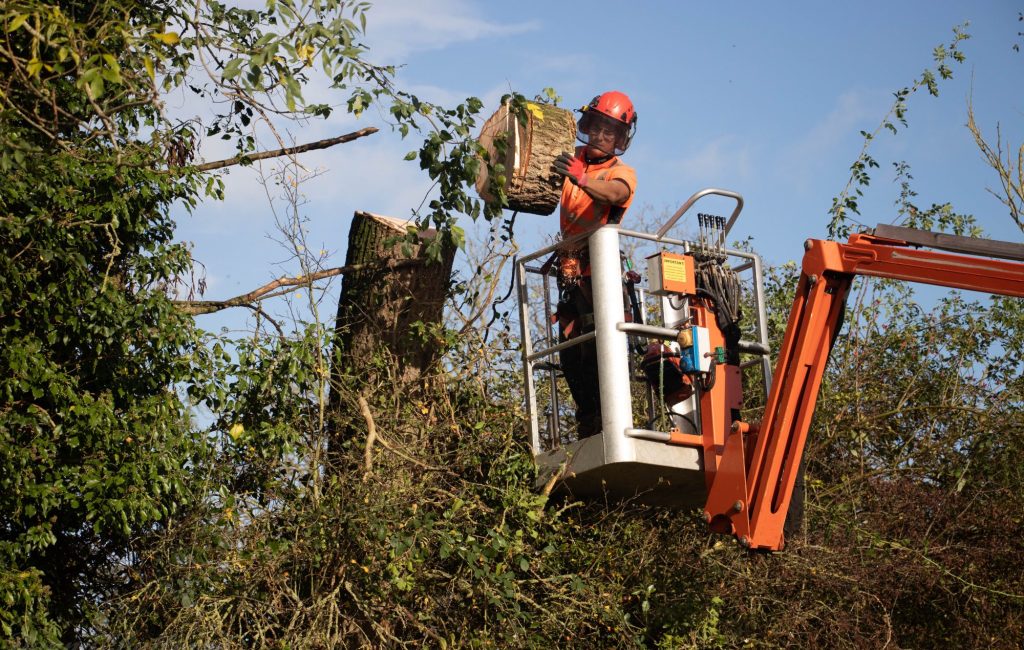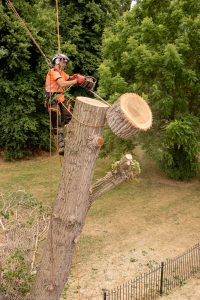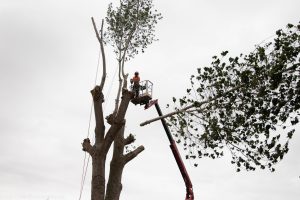

A Comprehensive Guide for Tree Surgeons
Sectional felling, or dismantling, is a technique used to remove trees. It involves working from the top down using aerial operations. There are various reasons why a tree might need to be removed, including limited space in the surrounding area, construction or landscaping purposes, or if health conditions put the tree at risk of falling on its own. In this guide, we will explore the technique of sectional felling, including why it is done and how it is carried out.
Factors Affecting the Choice of Dismantling Method
Several factors can affect the choice of dismantling method for a tree, including:
- Size of the tree to be dismantled
- Shape/form of the tree
- Access/drop zones (how much space is around the tree)
- Health and stability of the tree
Methods of Sectional Felling/Dismantling:
Work positioning
Work positioning involves a trained and qualified Arborist using a harness and ropes to climb to the top of the tree to secure an anchor point. The climber will then abseil down to the lowest branch and work up the tree, removing sections using approved and current cutting methods.
In some situations, the use of a rigging kit will be required. This is installed on an anchor point within the tree that has enough strength to hold the weight of the pieces to be lowered. A rope is usually placed in a pulley block to create less friction and wear on the equipment. Branches and timber are attached using the end of the rigging rope and held by a competent person on the ground at the other end of the rope, generally with the aid of a tree surgery lowering device such as a block attached to the tree. The rope can be wrapped around to create friction, giving more control and maximising the safety of the ground staff. The pieces are then cut by the Arborist in the tree and lowered to the ground in a controlled manner by the ground staff.

Aerial access using a MEWP (Mobile Elevated Work Platform)
A MEWP may be used when the tree is unsafe to climb due to disease or decay. A competent person will assess ground conditions to ensure the stability of the machinery to be used. The platform operator will employ a harness and lanyard to control the risk of falling from the basket and will always be attached to the basket when operating the machinery. Operators should be trained and competent in using a chainsaw from a MEWP to carry out the work.

Photo credit – All photos in this post were provided by MB Trees (East Anglia) Ltd, a tree surgery company based in Suffolk.
If you need help choosing the right tree surgeon for check out our guide or visit our database of professionals here
Want to get listed on Directree?
Are you a tree surgeon? Click the button to claim your free listing and see our other membership options today!
Are you looking for a tree surgeon?
Are you looking for a professional in your area to help you? Click the button to search our database today!







